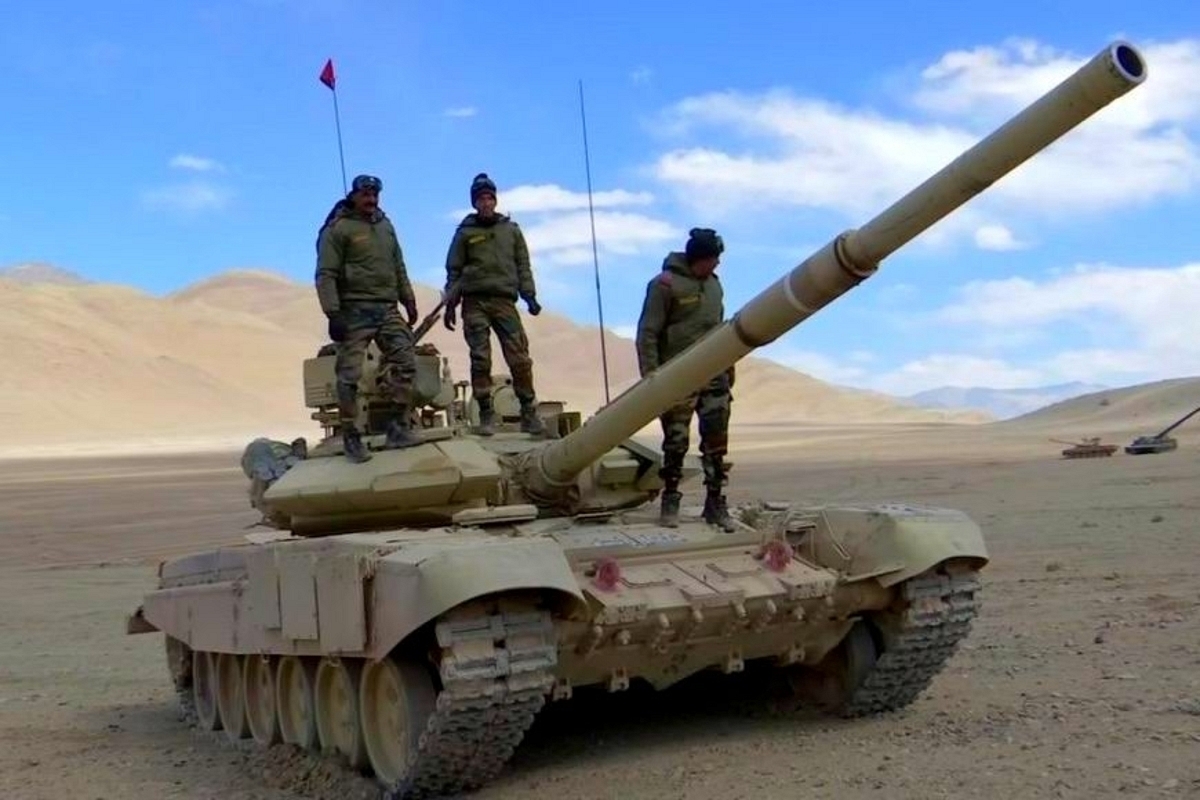Defence
How The Indian Army Is Gearing Up For Another Round Of Winter Deployment Amid Renewed Hopes Of De-Escalation With China

Indian Army tank in Ladakh.
The Indian Army is upgrading the batteries, fuels, and lubricants of its Russian-origin T-90 and T-72 tanks in preparation for another round of deployment in the harsh winters of eastern Ladakh for the ongoing India-China standoff, reported Indian Express.
This comes amid hopes of a potential easing of the number of troops next summer season, agreed upon by both India and China, reportedly in the corps commander talks held a week ago (on 9-10 October).
Additionally, another round of corps commander talks is scheduled to be held in the winter months to further refine the specifics of this agreement.
In the eastern Ladakh sector, temperatures can plummet to minus 30 degrees Celsius, making it incredibly challenging to operate heavy vehicles like tanks, infantry fighting vehicles, and trucks.
Due to the extreme negative temperatures, the diesel fuel, and the lubricants used in the hydraulic systems of a tank's gun, and in the chassis, freeze, reducing their mechanical efficiency.
Apart from hydraulics systems, lead-acid batteries used to powering up and running the electronic systems are also heavily impacted by the extreme temperatures.
An official with experience in operating in eastern Ladakh stated, “Exposure to sub-zero temperature and oxygen-deficient atmosphere freezes the fuel and lubricants and impacts the mechanical efficiency of the platforms. The hydraulics, electronics and batteries of the heavily sophisticated platforms are also impacted.”
According to The Indian Express report, to counter this army has started using a special anti-freeze diesel fuel and multigrade lubricants that are capable of operating effectively at even extreme cold temperatures.
A common diesel fuel for the entire fleet has successfully gone through trials and will be procured for all vehicles, ranging from trucks, infantry combat vehicles, tanks, and artillery guns, easing the logistics burden.
Earlier, multiple types of fuels were stocked for multiple vehicles, which can complicate logistics in times of war.
Moreover, advanced multigrade lubricants that do not freeze or lose viscosity are being introduced for both tanks and artillery guns.
Additionally, pure Lead-Tin (PLT) batteries, superior to existing Lead-Acid batteries in negative temperatures, are being tested and will be implemented in all vehicles.
The report quoted the official as saying, "These are being used for trucks and are being tested for heavier armoured vehicles. These batteries deliver high current and are vital for starting tanks in extremely low temperatures."
In terms of infrastructure, heated shelters for tanks and armored vehicles have been developed to facilitate their operation in cold temperatures. These temperature-controlled shelters can house the entire fleet and employ air blowers to maintain the required temperature.
“Air blowers are used here to maintain temperature and the complete fleet can be housed in these temperature-controlled shelters,” the official further added.
All these measures, according to the report, have allowed a 95 per cent fleet readiness, enabling quick responses from the army.
The report states, “At the operational and tactical level, introduction of specialist equipment to include rectifiers, PLT batteries, utilisation of specialist grade FOL (fuels, oils, lubricants), preventive maintenance and development of best practices have enabled operational readiness of 95 per cent, which contributes significantly to the operational preparedness of the Army.”
Moreover, two additional repair facilities have been constructed ahead of Leh to repair any broken-down tank or armoured vehicle.
Earlier, these tanks and armoured vehicles were taken to Udhampur in Jammu and to Delhi for extensive repairs.
Similar efforts will be initiated in the Sikkim area, where tanks are deployed.
Notably, following the India-China clashes at Pangong Tso and Galwan Valley in May and June 2020, India deployed over 68,000 troops, 400 tanks, and BMP infantry fighting vehicles in eastern Ladakh to counter any further Chinese aggression.
Support Swarajya's 50 Ground Reports Project & Sponsor A Story
Every general election Swarajya does a 50 ground reports project.
Aimed only at serious readers and those who appreciate the nuances of political undercurrents, the project provides a sense of India's electoral landscape. As you know, these reports are produced after considerable investment of travel, time and effort on the ground.
This time too we've kicked off the project in style and have covered over 30 constituencies already. If you're someone who appreciates such work and have enjoyed our coverage please consider sponsoring a ground report for just Rs 2999 to Rs 19,999 - it goes a long way in helping us produce more quality reportage.
You can also back this project by becoming a subscriber for as little as Rs 999 - so do click on this links and choose a plan that suits you and back us.
Click below to contribute.
Latest